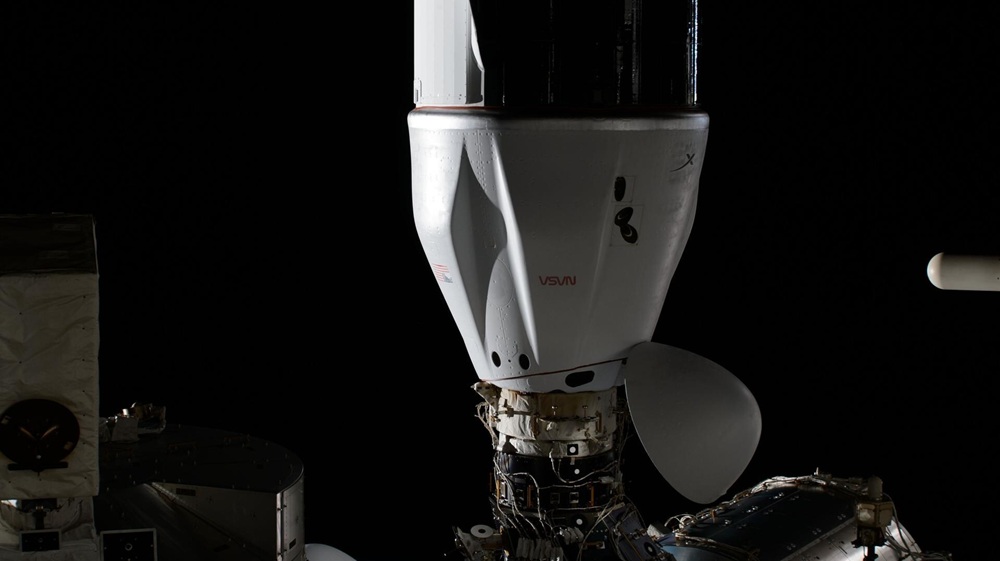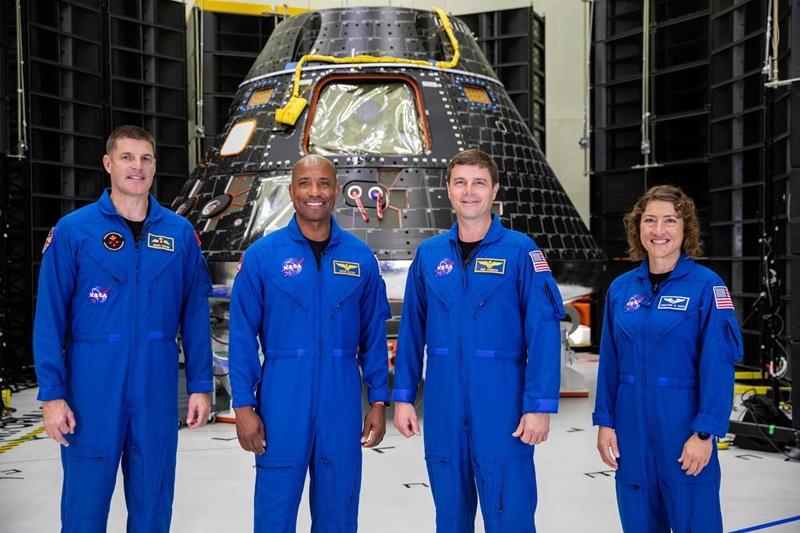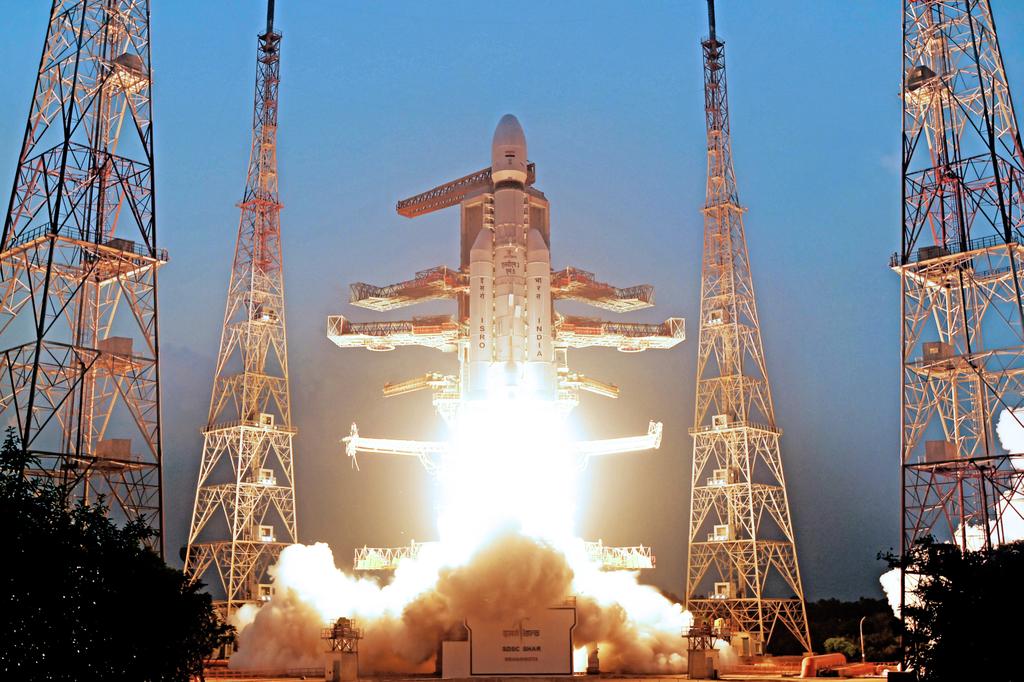After a month-long mission delivering vital supplies and experiments to the International Space Station (ISS), NASA’s SpaceX Dragon cargo spacecraft is preparing to depart the orbiting laboratory and return to Earth on May 22, 2025. This marks the conclusion of NASA’s 32nd Commercial Resupply Services mission with SpaceX, a key component in sustaining ongoing scientific research and station operations in low Earth orbit.
NASA’s live coverage of the Dragon’s undocking and departure began on May 22 at 11:45 a.m. EDT on NASA+, providing viewers worldwide an opportunity to witness this critical phase of the mission. While the splashdown itself will not be broadcast live, NASA’s space station blog will keep the public informed as the spacecraft safely returns its invaluable cargo to Earth.
The Dragon spacecraft arrived at the ISS on April 22, having launched a day earlier atop a Falcon 9 rocket from Kennedy Space Center’s historic Launch Complex 39A in Florida. Docked to the space-facing zenith port of the station’s Harmony module, the spacecraft has been a hub for transferring nearly 6,700 pounds of cargo, including food, equipment, and a wide array of scientific investigations.
As the departure date approaches, the Expedition 73 crew aboard the ISS has been meticulously packing the Dragon with completed experiments, research samples, and hardware slated for return to Earth. NASA astronauts Anne McClain and Nichole Ayers, along with Commander Takuya Onishi and Flight Engineer Jonny Kim, have worked collaboratively to load time-sensitive and critical science payloads, including portable science freezers containing delicate biological samples.
The Dragon will undock from the Harmony module’s zenith port at 12:05 p.m. EDT on May 22, initiating its carefully controlled departure maneuver under the guidance of SpaceX’s Mission Control in Hawthorne, California. Following a safe distance clearance from the ISS, the spacecraft will begin its descent through Earth’s atmosphere, culminating in a splashdown off the coast of California on May 23. While there will be no live video of the splashdown, NASA will provide timely updates on its space station blog.
Among the scientific payloads returning aboard Dragon are several high-profile experiments that promise to deepen understanding of materials science, robotics, education, and space technology.
MISSE-20 (Materials International Space Station Experiment): This experiment involved exposing a variety of materials to the harsh environment of space on the station’s exterior. Samples include radiation shielding and detection materials, solar sails, reflective coatings, ceramic composites for spacecraft reentry studies, and resins potentially useful for heat shields. By analyzing how these materials withstand ultraviolet radiation, atomic oxygen, charged particles, and thermal cycling, scientists can develop improved materials for future spacecraft and satellites.
Astrobee-REACCH (Responsive Engaging Arms for Captive Care and Handling): This innovative robotics demonstration utilized Astrobee free-flying robots equipped with tentacle-like arms and adhesive pads to grasp and relocate objects of varying shapes and surfaces in microgravity. Successfully demonstrating these capabilities aboard the ISS could pave the way for advanced satellite servicing, orbital debris removal, and end-of-life spacecraft management—critical steps for maintaining the safety and longevity of satellites that provide essential services on Earth.
Story Time from Space: A unique educational outreach project, this initiative had astronauts aboard the ISS read five STEM-related children’s books in orbit while videotaping themselves conducting related science experiments. The videos and data were transmitted to Earth and made available in an educational video library with accompanying curriculum materials. This project aims to inspire young learners worldwide by connecting space exploration with literacy and science education.
OPTICA (Onboard Programmable Technology for Image Compression and Analysis): This one-year technology demonstration focused on advancing the transmission of real-time, ultra-high-resolution hyperspectral imagery from space to Earth. By improving data compression and processing onboard the spacecraft, OPTICA has the potential to reduce communication bandwidth requirements and costs without sacrificing data volume. Such advancements could enhance Earth observation services critical for disaster response and environmental monitoring.
For over 24 years, the ISS has been continuously inhabited, serving as a unique laboratory for scientific research that benefits humanity and prepares for future exploration beyond low Earth orbit. The experiments returning aboard Dragon contribute to NASA’s Artemis program goals, which include returning humans to the Moon and eventually sending astronauts to Mars. Moreover, the station fosters expanding commercial activities in space, supporting a growing ecosystem of research and industry in orbit.
The return of the Dragon spacecraft and its precious cargo is a vital link in the chain of discovery and innovation enabled by the ISS. As researchers analyze the returned samples and data, new insights will emerge to inform spacecraft design, robotic servicing, educational outreach, and Earth observation technologies. These advancements not only enhance current space operations but also lay the groundwork for humanity’s next giant leaps into the solar system.
Meanwhile, NASA is set to welcome the previous Expedition 72’s four atsronauts—Nick Hague, Suni Williams, Butch Wilmore, and Don Pettit— a special ceremony at Space Center Houston on May 22, 2025.
After months of pioneering research and historic spaceflight, these four astronauts will share the views at a free, public event at NASA’s Johnson Space Center. They will highlight from their recent missions aboard the International Space Station (ISS), followed by an awards ceremony recognizing key contributors to their success.
Williams and Wilmore’s journey began on June 5, 2024, when they launched aboard Boeing’s Starliner spacecraft on its Crew Flight Test, marking a significant milestone for Boeing’s commercial crew program. Originally planned as a short mission, their stay extended unexpectedly to 286 days due to the Starliner’s uncrewed return in August 2024. They integrated with the Expedition 71/72 crew and returned to Earth aboard SpaceX’s Crew-9 spacecraft alongside Nick Hague and Roscosmos cosmonaut Aleksandr Gorbunov.
Hague’s mission launched on September 28, 2024, with Gorbunov aboard a SpaceX Falcon 9 rocket. The duo docked to the ISS’s Harmony module and spent 171 days conducting vital scientific research. The Crew-9 mission concluded with a safe splashdown off the coast of Tallahassee, Florida, on March 18, 2025.
Don Pettit’s fourth spaceflight began on September 11, 2024, aboard the Soyuz MS-26 spacecraft. Serving as an Expedition 72 flight engineer, Pettit completed a seven-month mission with 3,520 Earth orbits, landing safely in Kazakhstan on April 19, 2025. Pettit’s extensive experience and passion for photography brought a unique perspective to the mission, capturing over one million photos that showcased life aboard the ISS.
The Expedition 72 crew collectively dedicated over 1,000 hours to experiments that push the boundaries of science and technology in microgravity. Their work advanced metal 3D printing capabilities, explored stem cell applications for disease treatment, and prepared the world’s first wooden satellite for deployment. They also collected samples from the station’s exterior to study microbial survival in space’s harsh environment, investigated plant growth and fire behavior in microgravity, and enhanced life support systems critical for future deep space missions.
These efforts not only deepen our understanding of living and working in space but also directly support NASA’s Artemis program, which aims to return humans to the Moon and eventually send astronauts to Mars. The research also fosters commercial innovation and international collaboration in low Earth orbit.





